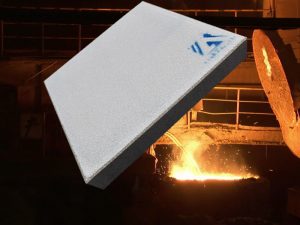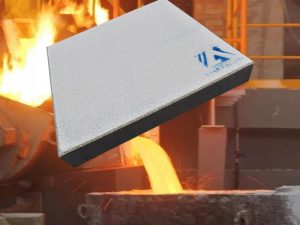Development of Large Aluminum Electrolytic Cell in China
Development of Large Aluminum Electrolytic Cell - 180kA Test Cell
In the mid-1980s, Alcoa Aloca697 and P225 electrolytic cells were industrialized internationally. After Pechiney adopted the AP18 cell type in the F series, the 180kA-200kA capacity electrolytic cells became the typical representative of the international advanced aluminum electrolysis technology and were adopted by other western countries. Countries to follow (such as Swiss Aluminum, Alcan, Norway Hydro, etc.). At the same time, 280kA ~ 300kA class extra-large electrolyzer has gradually started its industrialization process. The results of the physical field ("three fields") research has also pushed the development of China's aluminum electrolysis technology to an important turning point, and gradually established the confidence in the industry to take the road of independent development and build my country's aluminum electrolysis technology innovation system.
Therefore, in order to actively catch up with the frontier of international aluminum electrolysis technology development, Guiyang Institute and Guizhou Aluminum Factory applied to the State Economic Commission and Nonferrous Metals Corporation to build a pilot plant in Guizhou Aluminum Factory. The director of the factory, Sun Shengjun, decided to invest 18 million yuan to develop 4 sets of 180kA class. Aluminum electrolysis test cell (actual current 186kA). Approved in February 1987, the project was listed as a key project in the "Seventh Five-Year Plan" by the State Economic Commission and the Nonferrous Metals Corporation. During the construction of the pilot plant, the first factory director was Wu Weicheng (who later served as the leader of Chinalco), which was later merged into the first Electrolytic aluminum factory, the director is Li Hongpeng senior engineer. The chief designers of the Guiyang Institute project are Yang Hongru and Hu Qingxuan, senior engineers.
The main protocol of the trial. As the first large-scale pre-baked cell technology independently developed in my country, the technical problems and choices encountered are many. Under the conditions at that time, it was very challenging. Expert discussion meetings were held many times to listen to opinions from various aspects. After several iterations, the final design plan is as follows:
①The design current intensity is 186kA, and 4 test tanks are installed.
②The busbar configuration is designed to be powered at four points, which is "two ends + two points in the middle of the large surface". The compensation busbar from the middle to the end at the bottom of the 160kA electrolytic cell is reserved, and the middle short-circuits busbar is added.
③The anode size is 1450×660×540, the number of anode groups is 28, and the anode current density is 0.7A/cm2.
④ The anode lifting mechanism of 3 sets of troughs is of turbine worm type, which adopts four-point lifting; 1# tank refers to the turbine worm structure of the external screw type of Japan Sakata Aluminum Factory (155kA imported from Baiyin Aluminum Factory) for testing.
⑤Adopt the intermediate feeding method, four-point feeding, and the capacity of the feeder is 4.5kg. The original plan uses a pneumatic feeder (chute control), with a 5-ton wall material box, and uses a pneumatic chute for feeding (early ultra-dense phase technique).
⑥For the first time, the design of the small processing surface is adopted: the large surface is 375, the small surface is 450, and the anode middle seam is 200.
⑦The tank lining structure adopts a special design based on the isotherm diagram and heat flow distribution (and the shape of the furnace side) based on the thermal insulation at the bottom and the thermal insulation and anti-leakage structure of the lower side.
⑧ The test workshop adopts a two-story structure, the operating platform is +2.6m, and the workshop span is 22.5m.
⑨ The rectifier power supply adopts the introduction of 160kA from the second 80,000 tons that have been put into production, and then builds a 30kA unit to provide 26kA current to the test tank.
⑩In order to adapt to the influence of the large column busbar on the operation after the busbar "four-point entry", the multi-function unit cab must adopt the high-level operation mode.
The main designers are Yi Xiaobing, Xi Canning, etc. The author was initially responsible for the electro-thermal analysis simulation and the design of the lining structure, and then undertook the design and testing of the electromagnetic field and busbar. Chen Tinggui was responsible for the simulation of the flow field; The design of the system also received great attention at that time. The transmission device designed two types of turbine and worm mechanisms: one is that the commonly used turbine rotates to drive the worm up and down, and the other is that the turbine and the worm are fixed together to rotate and drive the fixed The lifting of the silk mother on the busbar (referring to the Japanese Sakata style), Liu Guangsheng, Wu Youwei, Guo Hailong, etc. have successfully completed this work; the first domestically produced machine developed and designed by Guiyang Institute and produced by Dalian Crane Factory was adopted. In the high-level operation of the multi-function unit, the chief designer is Liu Zongjun senior engineer.
Workshop Series Busbar Impact - First Asymmetric Configuration. As a single test slot series, due to the small number of slots, the magnetic field in the test slot is seriously disturbed by the magnetic field of the large loop busbar. In order to weaken this effect, according to the field conditions, the 160kA current return busbar introduced by the old series (precious aluminum three electrolysis) is arranged on one side of the test plant, and the additional 26kA small unit current is returned from the other side. Using the relationship that the magnetic induction intensity is proportional to the current and inversely proportional to the square of the distance, the distance between the busbars on both sides and the center of the slot can be adjusted to the greatest extent by simulation. The design results show that the 160kA large busbar is 51.2m away from the center of the slot, and the 26kA busbar is 11.7m away from the slot center. Of course, this still cannot completely eliminate its adverse effect on the magnetic field of the test slot, and the influence of this part of the magnetic field on the test slot is still asymmetrical. For this reason, the bus bars around the electrolytic cell are also designed to be asymmetrical, which further improves the magnetic field distribution of the test cell.
The design scheme passed the review. In July 1987, the National Nonferrous Metals Corporation organized a national expert to hold a review meeting on the design plan of the test tank in the Guizhou Aluminum Plant. The meeting was attended by Central South University, North China University of Technology, Zhengzhou Light Metal Research Institute, Guiyang and Shenyang Aluminum and Magnesium Design and Research Institute, Guizhou Liu Yexiang, Yao Shihuan, Mei Rongchun, Mei Chi, Pan Xuerong, Han Peichuan, Gan Yiren, Wuwei, Yang Hongru, Li Rundong, Cai Qifeng and other famous experts in the industry and leaders of the headquarter such as Fang Ying and Sun Liangjia. In addition to researching and discussing the configuration of the test tank, the cathode and anode, and the lining structure for a comprehensive review, the focus of the meeting is naturally the electromagnetic field of the test tank and the design of the busbar. The expert review meeting believed that the design of the test workshop was comprehensive in consideration of technical issues, advanced technology, and reliable physical field design.
The busbar design has twists and turns. The design of the busbar system is the key to the success or failure of an aluminum electrolytic cell, which is well known to aluminum electrolysis today, and the design of the busbar around the electrolytic cell is the determining factor. The criterion for judging the pros and cons of the busbar design is its magnetohydrodynamic properties. The driving force of the melt flow in the tank is mainly the electromagnetic force generated by the interaction of the current and the magnetic field. In addition to the influence of the cell structure, the current field is mainly determined by the design results of the thermal field; the calculation of the electromagnetic field needs to consider the comprehensive effect of the magnetic field generated by the complex conductors around the electrolytic cell, such as the influence of adjacent series, the influence of large series of busbars and iron. The complex effects of magnetic substances.
In February 1990, when the test cell had entered the stage of intense construction and installation, Yang Hongru, who had just participated in the review of the 280kA test cell (another major national key research project), found that the original busbar design of the 186kA electrolytic cell was limited by the software itself. Insufficient consideration of the complex electromagnetic field simulation calculation may lead to deviations in the electromagnetic simulation accuracy of the test tank, and the design of the busbar is conservative due to the technology imported from Japan.
Adjustment plan - interruption of construction. Therefore, under the strong suggestion of the chief designer Yang Hongru, the construction was interrupted when the project was about to enter installation. The newly developed second-generation magnetic field simulation program (LMAG) and busbar optimization software (LBUS) are used. After the magnetic influence is processed for different types of busbars, the final busbar design scheme is completed by recalculating the design. The new magnetic field simulation results of the test tank modified the power feeding ratio of the four-point power feeding scheme from the original 9:5:5:9 to 1:1:1:1, that is, the four vertical busbars were fed with equal currents. was successfully implemented.
From the start of the project in 1986 to the acceptance of the test tank in 1993, the design plan and field test were repeated repeatedly. The comrades of the Guiyang Institute and the project team of the Guizhou Aluminum Plant left regrets for fear of any problems. The comrades of the test group overcame many difficulties, experienced numerous adjustments and improvements, and solved a series of technical problems.
The final simulated electromagnetic and magnetohydrodynamic characteristics results: the maximum value of the vertical magnetic field in the tank is 12.72 Gauss (1Gs=10-4T), and the average is 4.87 Gauss; the maximum value of the transverse horizontal magnetic field is 102.5 Gauss, and the average value is 35.5 Gauss; the maximum value of the flow rate of the aluminum liquid layer is 17.19 cm/s, the average is 3.96cm/s; the maximum height of the aluminum liquid surface bulge is 1.51cm.
Under the condition that the current distribution error is not more than 3%, the busbar system designed by LBUS has a total voltage drop equivalent of 175mv, and the amount of aluminum busbar (including anode busbar) is only 27.1t/slot. The operation effect on the test tank has been verified.
However, comrades in the field of aluminum electrolysis may have seen that at that time, because the steps were not too big, the design of the busbar also had some traces of Japanese technology (power supply at both ends).
Conflict of knowledge - Test tank startup meets resistance again. The pilot project has been highly valued by the leaders of the Nonferrous Metals Corporation and the Science and Technology Department of the Corporation. With the efforts of all parties, it was finally completed in the second half of 1990 and has the conditions for starting operation. At this time, Sun Shengjun, the old director of the Guizhou Aluminum Plant, retired, and Yang Guang, the new director, took office, and the process of the test work was reversed. At the start-up plan demonstration meeting before production, some experts raised objections, worrying that there will be three technical risks after the start-up of the test tank: First, because the test tank has a current of 160kA from the last 80,000-ton series, the test tank is put into production Afterwards, it will cause its residual voltage to be insufficient and bring risks to production; second, from the perspective of power technology, there is also a risk that two units with different voltage levels can combine to provide 186kA (160kA+26kA); The magnetic field generated by the large busbar will affect the normal operation of the post-80,000-ton production. As a result of repeated debates, the third point could not convince everyone in any way: magnetic field, or magnetic field, this invisible and intangible problem. Just because they know that the magnetic field is the key, some experts arbitrarily believe that the Chinese do not have this ability. In the context of the time, it was impossible for an unprecedented experimental project to require the understanding of all experts.
Fang Ying's persistence. The start-up of the test tank was repeatedly delayed due to disagreements. During this process, Professor Fang Ying, director of the project coordination of the Science and Technology Department of the Nonferrous Metals Corporation, actively worked and coordinated with various parties. Organize a symposium, report and communicate with leaders from all walks of life, demonstrate sufficient scientific basis and confidence in the test work, and emphasize the importance of the test work to the development of aluminum electrolysis technology in my country. Finally, on the basis of expert argumentation, unanimous support from all quarters was obtained. At this time, Fang Ying shed tears of excitement.
Together from top to bottom - China's first successful large-scale tank development. Others who have made important contributions to this project are Liu Zhiping, the then deputy director of the Guizhou Aluminum Plant, and Feng Shaozhong, the chief engineer, who were the organizers and decision-makers of the project; Leng Zhengxu, the chief engineer of the electrolytic aluminum plant, and Li Jiwu, the workshop director, and other technical experts. played an important role in the testing process.
Looking back on this history, I can still feel the difficulty of the development process of large-scale slots, but in the historical background at that time, it is normal for such an episode in the test process to occur. Under the circumstance that most aluminum plants in my country are still using self-baking cells below 80kA, it is understandable that they cannot or dare not accept new things such as 180kA large-scale electrolytic cells for a while. Even after the test cell had passed the appraisal in 1994, a delegation of a large aluminum enterprise was choosing electrolytic cell technology for its expansion project. When inspecting the 180kA pilot plant for the first time, the factory manager sighed in front of the author: Such a large Guys, do we dare to do it? But today it seems a little funny, 600kA is too small for us, this is the process of our understanding of things.
After many efforts, the four test tanks were finally put into production in September 1991 after a delay of more than a year. After one and a half years of operation, the current efficiency of 93.5% and the DC power consumption of 13450kWh/tAl have been achieved. In March 1993, it passed the appraisal of national scientific and technological achievements. This is the first generation of modern large-scale pre-baked anode aluminum electrolytic cells independently developed by my country relying on its own research results, reaching the international advanced level at that time.
In 1998, this achievement won the second prize of the National Science and Technology Progress Award, which provided important core technologies and complete sets of equipment for the development of my country's aluminum electrolysis industry, marking that the development of my country's aluminum electrolysis technology has reached a new level and won the industrialization of large-scale tanks. valuable experience in development.
In the history of international aluminum electrolysis technology development, the tank type of this capacity is representative of modern aluminum electrolytic cell technology with typical significance, just like Alcoa A-697 and Alcoa AP18. In any case, the development of my country's 180kA test cell has finally successfully taken the first step, completed its historical mission, and laid the foundation for the development and industrialization of the subsequent 280kA, 320kA, 350kA, 400kA, and above electrolytic cells. historical significance.
A prerequisite for the manufacture of 7-series aluminum alloys is the manufacture of high-purity primary aluminum. AdTech has been focusing on providing a one-stop service for molten aluminum purification for many years. Our main products include degassing units, ceramic foam filters, deep bed filters, caster tips, and more. Please email us via sales@adtechamm.com if you need ceramic foam filters.




